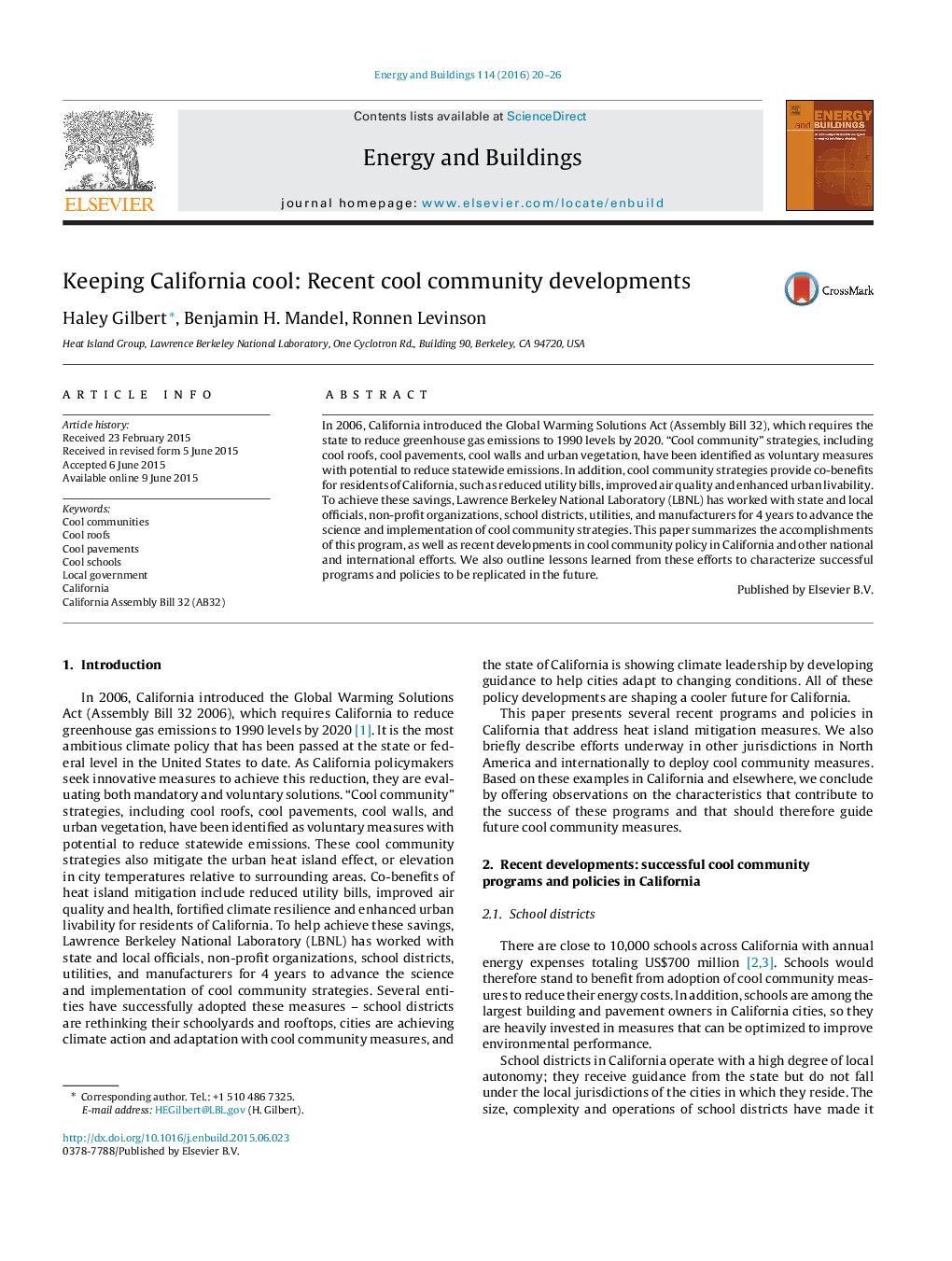| Article ID | Journal | Published Year | Pages | File Type |
|---|---|---|---|---|
| 262113 | Energy and Buildings | 2016 | 7 Pages |
•Cool community strategies include cool roofs, cool pavements and urban vegetation.•A mix of local and state initiatives are spreading cool communities in California.•Local governments and school districts have launched successful pilots and programs.•Statewide efforts to advance cool community measures are more exploratory.•Strong leadership, broad support, and policy complementarity can lead to success.
In 2006, California introduced the Global Warming Solutions Act (Assembly Bill 32), which requires the state to reduce greenhouse gas emissions to 1990 levels by 2020. “Cool community” strategies, including cool roofs, cool pavements, cool walls and urban vegetation, have been identified as voluntary measures with potential to reduce statewide emissions. In addition, cool community strategies provide co-benefits for residents of California, such as reduced utility bills, improved air quality and enhanced urban livability. To achieve these savings, Lawrence Berkeley National Laboratory (LBNL) has worked with state and local officials, non-profit organizations, school districts, utilities, and manufacturers for 4 years to advance the science and implementation of cool community strategies. This paper summarizes the accomplishments of this program, as well as recent developments in cool community policy in California and other national and international efforts. We also outline lessons learned from these efforts to characterize successful programs and policies to be replicated in the future.
